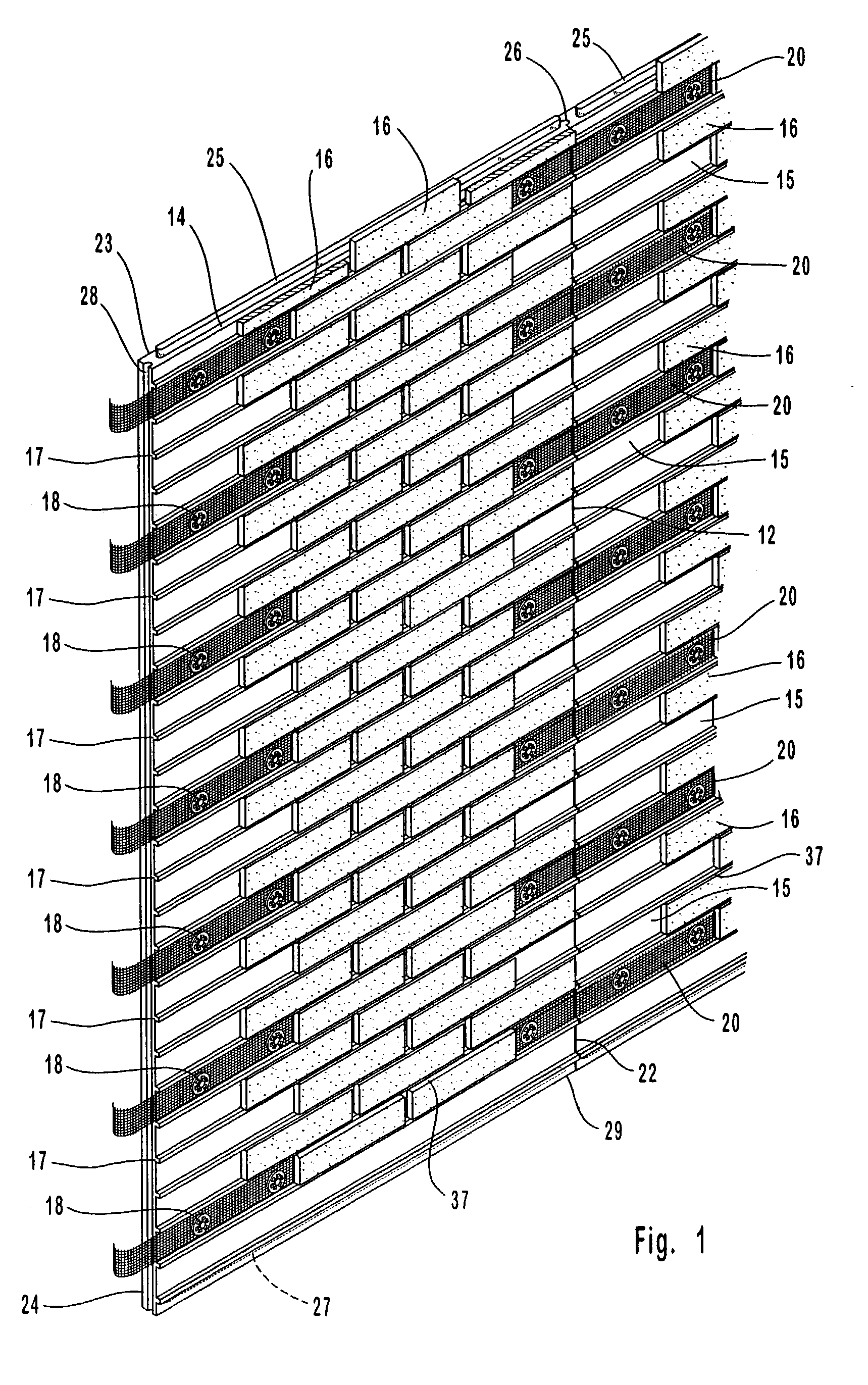Panel for thin bricks and related systems and methods of use
a thin brick and panel technology, applied in the field of thin brick panel systems, can solve the problems of poor adhesion, limited surface area of foam panels available for mortar bonding, and inability to meet the requirements of construction,
- Summary
- Abstract
- Description
- Claims
- Application Information
AI Technical Summary
Benefits of technology
Problems solved by technology
Method used
Image
Examples
Embodiment Construction
[0027]With reference to FIG. 1, the thin brick panel system of the present invention is indicated generally at 10. The system 10 is comprised of a panel 12, which may be formed from an expanded polystyrene insulation material, commonly referred to as beaded polystyrene foam, or the like. Expanded polystyrene panels provide for increased surface area for bonding between an adhesive, the thin brick units, and the panel. However, suitable panels for use in the system of the present invention may alternatively be formed from metals or other materials.
[0028]The foam panel 12 may be formed by cutting a sheet of expanded polystyrene foam, metal, or other material by any suitable means into the desired cross-sectional shape. Such material is flexible enough such that expansion and / or contraction due to temperature variations can be absorbed by the foam panel. In addition, beaded polystyrene foam can be manufactured in many shapes and sizes and does not have a thickness limitation, as is the...
PUM
 Login to View More
Login to View More Abstract
Description
Claims
Application Information
 Login to View More
Login to View More - R&D
- Intellectual Property
- Life Sciences
- Materials
- Tech Scout
- Unparalleled Data Quality
- Higher Quality Content
- 60% Fewer Hallucinations
Browse by: Latest US Patents, China's latest patents, Technical Efficacy Thesaurus, Application Domain, Technology Topic, Popular Technical Reports.
© 2025 PatSnap. All rights reserved.Legal|Privacy policy|Modern Slavery Act Transparency Statement|Sitemap|About US| Contact US: help@patsnap.com



